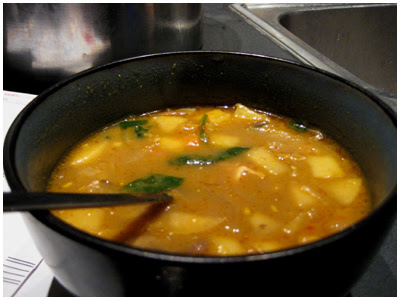
Growing up I would occasionally eat a dish my parents called "pasty". It was a rather plain, but hearty dish. My grandma would bake them every time she came down from Wisconsin to visit the family. She'd make a large batch and freeze some so we could heat them up later. I was never a huge fan of the dish as I child, but as Grandma came over less and less I started to miss them.
Two summers ago I visited Europe for a couple weeks. We touched down in Glasgow and the first meal I had on Scottish soil was a "steak and ale pie" in Sterling. It was very similar to the pasty I grew up on and really hit the spot in the cold weather.
Last week I was brewing a Bohemian pilsner on the roof of my apartment. It took almost twice as long as usual due to the frigid 13F Oklahoma weather. My hoses were freezing, my propane burner was stalling, and my hands were comatose. Somewhere in the baltic madness of it all, I thought about how comforting a meat pie of some sort would be. So this weekend (just in time for the weather to dramatically warm up) I decided to try my hand at making one. I put my recipe together from numerous sources on the internet, along with some personal touches:
Ingredients
meat:
- 1.5 lbs beef stew meat
- 3 cloves garlic, minced
- 2 cups peeled and cubed red potatoes (any potatoes will work)
- 1 1/2 cups quartered fresh mushrooms
- 2 onions, diced
- 2 turnips
- 8 oz carrots, chopped (I used a 16 oz bag of frozen carrots and peas)
- 8 oz peas
- 1 leek, chopped
- 2 bottles of my winter porter (suggested substitute beers: any bitter, brown ale, porter, or stout. Common examples include Boddington's, Newcastle, Fuller's London Porter, and Guinness respectively)
- powder mix for flaky pie crust
- 1/2 teaspoon dried thyme
- 1 1/2 teaspoons chopped fresh parsley
- 2 tablespoons Worcestershire sauce
- 2 tablespoons all-purpose flour
- salt and pepper to taste
- LARGE sauce pan (or a large skillet)
- 9-inch pie plate
- Place the beef stew meat, onion, garlic, and ale in large saucepan/skillet. Simmer over low heat until the meat is browned, about 25 minutes.
- Preheat the oven to 400F.
- Season the beef with garlic, thyme, parsley, Worcestershire sauce, salt and pepper. Mix in the potatoes, mushrooms, turnips, carrots, and peas. Cover and simmer over medium heat until potatoes are just tender enough to pierce with a fork, ~15 minutes. Mix in the flour and stir.
- Mix the crust according to the directions on the box (follow the directions for a "double pie"). Fit one pie crust into the bottom and up the sides of a 9 inch pie plate. Spoon the hot beef mixture into the crust and top with the remaining pie crust. Cut slits in the top crust to vent steam and crimp the edges to seal them together (also: to make them look pretty).
- Bake in preheated oven until the crust is golden brown and gravy is bubbling for about 25-40 minutes.
The pie was paired with the same beer I cooked it with, and I recommend you do the same. Let the beer warm up just a tad so you can better appreciate the flavors in the ale, and what they add to the pie.








